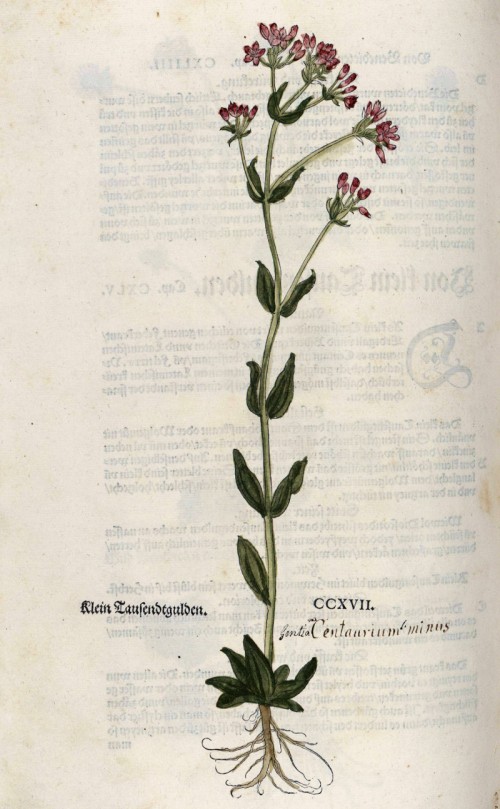Benutzer-Werkzeuge
Dies ist eine alte Version des Dokuments!
Centaurium erythraea Rafn - syn.Centaurium minus aut.; Centaurium umbellatum Gilib.; Erythraea centaurium auct. - Gentianaceae
(common) centaury, Echtes Tausengüldenkraut
Annual or biennial herb, up to 50cm high, native to Eurasia, Central Asia, North Africa, naturalized in North America; leaves basal, oblong (first year); flowers wheel-shaped, pink (second year).
Swertiamarin and sweroside, isolated from the aerial parts of Centaurium erythraea, „… inhibited the growth of Bacillus cereus, Bacillus subtilis, Citrobacter freundiiand Escherichia coli. While swertiamarin was also active against Proteus mirabilis and Serratia marcescens, sweroside inhibited the growth of Staphylococcus epidermidis.“
[Bioactivity of secoiridoid glycosides from Centaurium erythraea., Kumarasamy, Y., Nahar, L., Cox, P. J., Jaspars, M., Sarker, S.D., Phytomedicine, Vol.10(4), 2003, 344-347]
The dried aerial parts are used as bitter tonic to treat dyspepsia. „A bitter tonic to treat digestive disturbances, chronis dyspepsia, and lack of appetite. Traditionally thought to be helpful to treat fever and gastrointestinal, liver, bile, bladder and urological complaints. Externally used for wound treatment…
The plant contains bitter iridoid glycosides, so-called secoiridoids - mainly swertiamarin but also gentiopicrin, deacetylcentapicrin ans sweroside.“
[Medicinal Plants of the World. Ben-Erik Van Wyk and Michael Wink, Pretoria 2004, 89]

Centaurium erythraea Rafn [as Centaurium minus]
Fuchs, L., New Kreüterbuch, t.217 (1543)
http://plantgenera.org/species.php?id_species=220560
